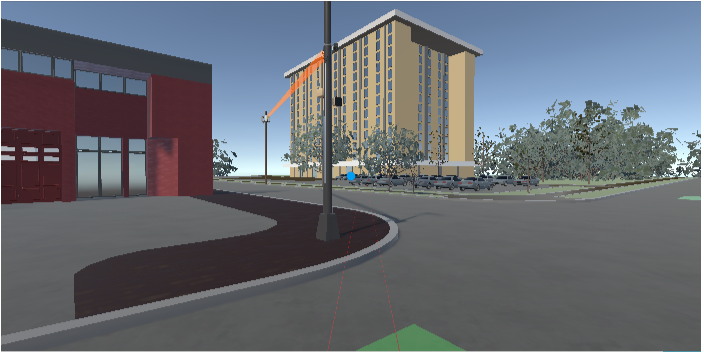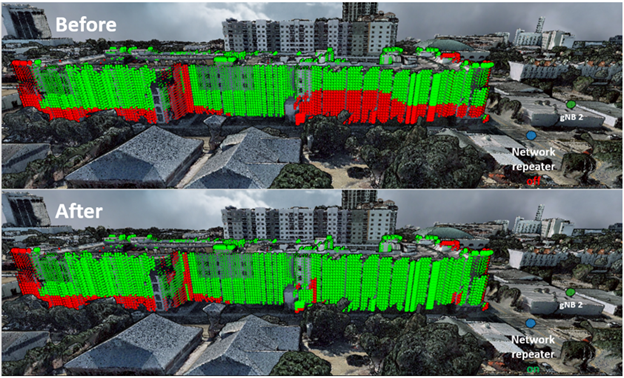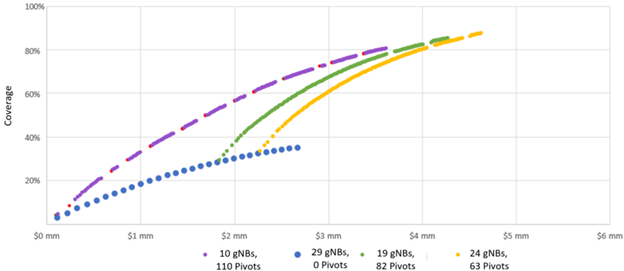Building More Sustainable Networks for a Better Future
By Lexa Bauer, Technical Content Manager
Job seekers have been prioritizing sustainability when applying to jobs for at least half a decade, and that’s only increasing. A 2017 Guardian report found that “65% of people across China, Germany, India, the UK, and the US want to work for an organization with a strong social conscience.” A study from 2023 found that "1 in 3 young workers turn down jobs" if a business has poor Environmental, Social, and Governance (ESG) ratings. But it’s not just young workers, older employees and job seekers are beginning to prioritize climate-friendly employers as well.
While that might seem like a hard sell for many companies trying to rapidly expand 5G network infrastructure, a pivot to energy-saving repeaters along with increasing the coverage of 5G itself are in line with climate-focused environmental practices.
The Power of 5G

The Covid-19 pandemic has opened many companies’ eyes to the viability of a robust remote workforce. The ubiquitousness of home offices combined with an explosion of teleworking apps and the ability to easily connect to a company network not only takes hundreds of cars off the road, but also saves on office energy costs as well.
Still, some challenges persist, and some things still need to be done on-site, but 5G can continue to bring the office to people, rather than the other way around. With augmented and virtual reality, and the 5G connection speeds to ensure that they run smoothly, and without burdensome wires, remote employees can do everything from review a part for fabrication as if they’re in the room looking at it to test deployment scenarios for their products without having to go on site.
Pivotal has used VR for this very purpose, showing stakeholders what our equipment looks like deployed in their jurisdictions against the backdrop of the roads, poles, and buildings that actually exist. This cuts down on tedious and environmentally unfriendly site visits from multiple people.
As 5G connectivity becomes more widespread and accessible, the number of things that can be done remotely increases exponentially as connection speeds and bandwidth rise to accommodate faster and larger transfers of data.
How to Get There
Of course, base stations don’t grow on trees, and the limited signal propagation from expensive and time-consuming base station deployments would seem to suggest the path forward is environmentally deleterious.
Not so with low-power repeaters that require a fraction of the time to deploy. Even in a relatively small urban area, the use of Pivots in place of base stations results in hundreds of thousands of pounds of CO2 that is never generated. And this doesn’t even account for the fact that Pivots require a fraction of the on-site construction. If a gNB requires a new pole to be built and fiber to be laid, it can take up to two years to get the base station operational. Even in a better-case scenario where a base station is only replacing an eNB it can take up to 8 months. A Pivot can be permitted in just 3 months and installed in around 90 minutes. Not only does that mean the equivalent of cars off the road in terms of power savings, it means actual cars off the road via fewer personnel required to permit, site survey, and deploy.
Consumers and businesses can have their widespread, high-speed 5G networks without a steep environmental cost.
A Life Cycle of Sustainability

With much of the design, modeling, and surveying processes done remotely, further enabled by expanding 5G connectivity, using repeaters can vastly improve the sustainability of the entire life cycle from design to deployment.
In the design phase, our advanced 5G network infrastructure modeling further reduces the time spent traveling to sites and making site walks and takes even more cars off the road. With high-resolution GIS data, WaveScape optimizes pole usage and provides analysis for bringing Fixed-Wireless access to Multi-Dwelling Units or Single-family homes.
Before a base station can be erected, there needs to be, typically, a fiber connection. If there’s already nearby fiber, great. If not, digging and installing cable is an environmentally expensive process. Per the EPA a typical car uses about 511 gallons per year – about 2 gallons per workday – and emits 8,887 grams of CO2per gallon. Even if it were operating at the same efficiency, a typical fiberoptic trencher burns 14.5 gallons of fuel per hour. That means it takes less than a full work week, just over 35 hours, for a trencher to burn through the same amount of fuel as a passenger vehicle in an entire year. Or to put it another way a passenger vehicle will emit 17,774 grams of CO2 per day while a trencher will do it in about an hour and 6 minutes.

When installed, the 1500W power consumption of a base station is orders of magnitude higher than that of a 30W Pivot. It takes 50 Pivots to equal the power draw of one base station. Subscriber density will vary the number of Pivots required, but in one deployment scenario, 110 Pivots took the place of 19 base stations to attain the same amount of coverage, a 5.8 to 1 ratio in the other direction. When this is factored in, utilizing Pivots instead of base stations will save 7-9 times the power consumption depending on the density of the deployment area.
Base station operators have taken steps to reduce their power draw, mainly selectively turning off antenna chains, which has an energy savings of up to 30%. But even if this were happening 100% of the time and base stations were using 1050W of power on average, Pivot would still come out ahead by a factor of 4-6 depending on the number of Pivots required in that area.
Compatible Necessities
High-speed internet is a continually growing need. The Electronic Frontier Foundation reported an average data usage of 207 Mbps downloading and 16 Mbps uploading for American users. That’s projected to hit 500 Mbps down and 40 Mbps up by 2026, growth of 142% and 250% respectively. Fixed-Wireless Access through high-speed 5G networks can facilitate that.
The need for sustainable technology is also going to grow, and 5G networks are compatible with that vision -- if designed and deployed correctly. Not only can 5G repeaters enable a lower environmental cost in the deployment of new networks, they can also replace more energy inefficient aging infrastructure bringing the best of both worlds – high speeds and sustainability – to users.

